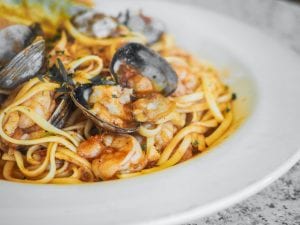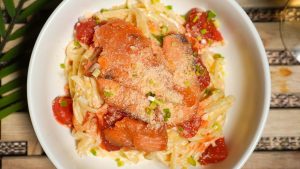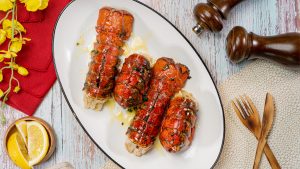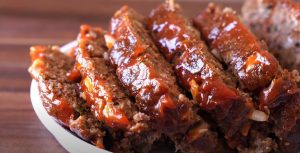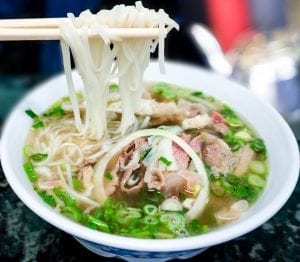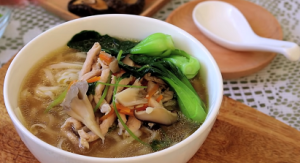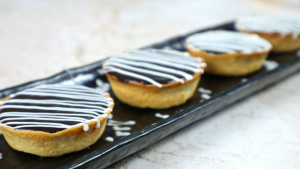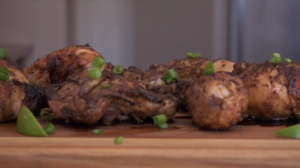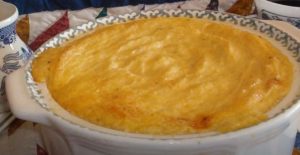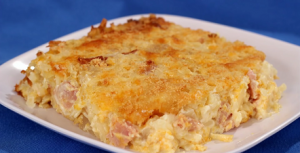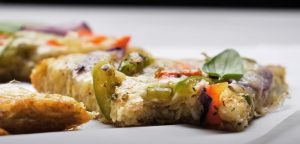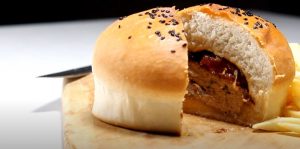This lobster linguine recipe is a delightful combo of succulent lobster and al dente linguine enveloped in a rich and savory tomato-based sauce. This meal is elegant enough for a special occasion, yet simple enough to enjoy on a weeknight.
Photos of Linguine all’Aragosta Fresco (Lobster Linguine) Recipe
The key ingredient in this recipe is the lobster tails. These can usually be found in the seafood section of your supermarket. They are often sold frozen, so remember to thaw them properly before cooking. The chablis wine is a type of dry white wine from the Burgundy region of France, which adds a unique flavor to the sauce. If you can't find it, feel free to substitute with another dry white wine.
Ingredients for Fresh Lobster Linguine
lobster tails: The star of the dish, providing a rich, sweet, and slightly tangy taste.
unsalted butter: Gives the sauce a creamy and rich flavor.
scallions: Adds a bright and fresh taste.
garlic: Gives a strong and aromatic flavor.
roma tomatoes: Provides a sweet and tangy base for the sauce.
chili powder: Adds a kick of spiciness.
basil: Gives a sweet and peppery taste.
chablis wine: Enriches the sauce with a fruity and tangy flavor.
linguine pasta: Serves as the foundation of the dish, absorbing all the flavors.
light cream: Adds a luxurious, creamy touch to the sauce.
sea salt and ground black pepper: Season to taste.
parmesan cheese: Adds a sharp and salty finish.
One reader, Arlan Crouch says:





This fresh lobster linguine recipe is a game-changer! The combination of succulent lobster, aromatic garlic, and flavorful tomatoes creates a symphony of flavors. The creamy sauce perfectly coats the al dente linguine, making every bite a delight. It's a restaurant-quality dish that's surprisingly easy to make at home. Highly recommended!
Key Techniques for Crafting Fresh Lobster Linguine
How to steam lobster tails: Place a steamer insert into a saucepan and fill with water just below the bottom of the steamer. Cover and bring the water to a boil over high heat. Add lobster tails, replace the cover, and steam for about 10 minutes until no longer translucent in the center. Remove meat from the shell and cut into bite-size pieces.
How to make the lobster linguine sauce: Melt the butter in a large skillet over medium heat. Add scallion whites and garlic. Cook and stir for 1 to 2 minutes until aromatic. Add tomatoes, chili powder, and basil. Cook for 2 to 3 minutes until tomatoes have softened slightly. Add wine and reduce heat to medium-low. Cook the sauce for about 30 minutes, uncovered, stirring occasionally until the wine has evaporated.
How to cook linguine: Bring a large pot of lightly salted water to a boil. Cook linguine at a boil for about 11 minutes until tender yet firm to the bite. Drain.
How to finish the lobster linguine: Reduce heat under the sauce. Add lobster, cream, and scallion greens. Cook for 5 to 10 minutes until thickened to the desired consistency. Season with sea salt and pepper. Add pasta in batches, tossing thoroughly to coat after each addition. Sprinkle parmesan cheese on top.
How To Make Linguine all’Aragosta Fresco (Lobster Linguine)
Enjoy a delicious seafood dish with this lobster linguine. It’s cooked in a wine tomato sauce, seasoned with basil and chili, for a rich and filling meal!
Serves:
Ingredients
- 10ozlobster tails,uncooked
- ¼cupunsalted butter,cubed
- 3scallions,minced, white parts only
- 1½tbspgarlic,minced
- 8Roma tomatoes,(concasse), crushed
- 1tbspchili powder
- 1½tspdried basil
- 1cupchablis wine
- 16ozlinguine pasta,(1 package)
- ¼cuplight cream
- 1scallion,thinly sliced, green part only
- 1pinchsea salt and ground black pepper,to taste
- 2tbspParmesan cheese,grated
Instructions
-
Place a steamer insert into a saucepan and fill with water just below the bottom of the steamer. Cove and bring the water to a boil over high heat.
-
Add the lobster tails, replace the cover, and steam for about 10 minutes until no longer translucent in the center. Remove meat from the shell and cut into bite-size pieces.
-
Melt the butter in a large skillet over medium heat. Add the scallion whites and garlic. Cook and stir for 1 to 2 minutes until aromatic.
-
Add the tomatoes, chili powder, and basil. Cook for 2 to 3 minutes until tomatoes have softened slightly.
-
Add the wine and reduce the heat to medium-low. Cook the sauce for about 30 minutes, uncovered, stirring occasionally until the wine has evaporated.
-
Bring a large pot of lightly salted water to a boil. Cook the linguine at a boil for about 11 minutes until tender yet firm to the bite. Drain.
-
Reduce the heat under the sauce. Add the lobster, cream, and scallion greens. Cook for 5 to 10 minutes until thickened to the desired consistency.
-
Season with sea salt and pepper. Add the pasta in batches, tossing thoroughly to coat after each addition. Sprinkle Parmesan cheese on top.
-
Serve warm, and enjoy!
Nutrition
- Calories: 726.02kcal
- Fat: 20.16g
- Saturated Fat: 11.48g
- Trans Fat: 0.47g
- Monounsaturated Fat: 5.15g
- Polyunsaturated Fat: 1.72g
- Carbohydrates: 95.00g
- Fiber: 6.38g
- Sugar: 7.77g
- Protein: 30.54g
- Cholesterol: 140.25mg
- Sodium: 476.22mg
- Calcium: 198.43mg
- Potassium: 869.65mg
- Iron: 3.12mg
- Vitamin A: 238.39µg
- Vitamin C: 20.91mg
Crucial Technique for Perfecting Fresh Lobster Linguine
When steaming the lobster tails, ensure you don't overcook them as this can make the meat tough and chewy. The lobster is done when it's no longer translucent but a pearly white. Also, when adding the linguine pasta to the sauce, ensure the pasta is al dente. This means it should still have a slight bite to it and not be overly soft. This allows the pasta to absorb the sauce better, resulting in a more flavorful dish.
Time-Saving Tips for Preparing Fresh Lobster Linguine
Prep ahead: Prepare the lobster tails and sauce in advance to cut down on cooking time when you're ready to make the dish.
Use pre-cut ingredients: Opt for pre-cut vegetables or pre-made sauces to save time on prep work.
Multi-task: While the sauce is simmering, cook the pasta to maximize efficiency in the kitchen.
Organize your workspace: Keep all your ingredients and tools within reach to streamline the cooking process.
Quick cleanup: Clean as you go to minimize the post-cooking cleanup time.
Efficient cooking: Use multiple burners to cook different components of the dish simultaneously for a faster cooking process.
Substitute Ingredients For Linguine all’Aragosta Fresco (Lobster Linguine) Recipe
lobster tails - Substitute with shrimp: Shrimp can be used as a more affordable and accessible alternative to lobster tails, providing a similar sweet and delicate flavor to the dish.
unsalted butter - Substitute with olive oil: Olive oil can be used as a healthier alternative to butter, adding a rich and fruity flavor to the dish.
scallions - Substitute with shallots: Shallots can be used as a substitute for scallions, providing a mild onion flavor with a hint of garlic.
garlic - Substitute with garlic powder: Garlic powder can be used as a convenient substitute for fresh garlic, providing a similar flavor without the need for mincing.
roma tomatoes - Substitute with canned diced tomatoes: Canned diced tomatoes can be used as a substitute for fresh roma tomatoes, providing a convenient option when fresh tomatoes are not available.
chili powder - Substitute with paprika and cayenne: A combination of paprika and cayenne can be used as a substitute for chili powder, providing a similar level of heat and smokiness to the dish.
basil - Substitute with parsley: Parsley can be used as a substitute for basil, providing a fresh and herbaceous flavor to the dish.
chablis wine - Substitute with dry white wine: Dry white wine, such as Sauvignon Blanc or Pinot Grigio, can be used as a substitute for Chablis wine, providing a similar acidity and flavor profile.
linguine pasta - Substitute with fettuccine pasta: Fettuccine pasta can be used as a substitute for linguine, providing a similar texture and shape for the dish.
light cream - Substitute with half-and-half: Half-and-half can be used as a substitute for light cream, providing a slightly lower fat content while still adding richness to the dish.
parmesan cheese - Substitute with pecorino Romano cheese: Pecorino Romano cheese can be used as a substitute for Parmesan cheese, providing a similar salty and nutty flavor to the dish.
How to Beautifully Present Fresh Lobster Linguine
Elevate the plating: When presenting the dish, carefully arrange the lobster linguine on the plate to create an appealing visual composition. Consider using a circular mold to neatly stack the pasta and lobster, and then delicately remove the mold to reveal a beautiful arrangement.
Garnish with fresh herbs: Sprinkle the dish with freshly chopped chives or parsley to add a pop of color and a touch of freshness. The vibrant green hues will contrast beautifully with the rich tones of the lobster linguine, enhancing the overall visual appeal.
Incorporate edible flowers: Introduce a touch of elegance by incorporating edible flowers, such as nasturtiums or pansies, as a delicate garnish. These floral accents will add a sophisticated and luxurious touch to the presentation.
Utilize fine dining serveware: Opt for elegant, high-quality serveware to elevate the dining experience. Consider using sleek, minimalist plates and utensils to showcase the lobster linguine in a refined and sophisticated manner.
Create a focal point: Arrange the lobster tails on top of the linguine in a visually striking manner to create a captivating focal point. This will draw attention to the star ingredient and showcase the luxurious nature of the dish.
Emphasize symmetry and balance: Pay attention to the placement of each component on the plate, aiming for symmetry and balance in the presentation. This meticulous approach will demonstrate precision and attention to detail.
Highlight the vibrant colors: Emphasize the natural colors of the dish by ensuring that the tomatoes, lobster, and pasta are showcased prominently. The visual vibrancy of the ingredients will captivate the senses and entice the diners.
Use negative space: Embrace the concept of negative space to allow the dish to breathe visually. Avoid overcrowding the plate, and instead, strategically position the elements to create an aesthetically pleasing and visually impactful presentation.
Essential Kitchen Tools for Making Lobster Linguine
Saucepan: A deep cooking vessel with a handle and often a lid, used for boiling, stewing, or making sauces.
Steamer insert: A perforated metal or bamboo insert that fits into a saucepan, used for steaming vegetables, seafood, or other foods.
Skillet: A flat-bottomed pan with sloping sides, used for frying, searing, and sautéing.
Large pot: A deep cooking vessel with a handle and often a lid, used for boiling pasta, making soups, or cooking large quantities of food.
Colander: A bowl-shaped kitchen utensil with perforations for draining liquids from food, such as pasta or vegetables.
Food processor: A kitchen appliance used for chopping, slicing, shredding, and pureeing food.
Mixing bowl: A deep bowl used for mixing ingredients, preparing batters, and holding food during cooking or serving.
Whisk: A kitchen utensil with a handle and wire loops, used for beating, whipping, and blending ingredients.
Tongs: A utensil with two arms and a pivot, used for picking up and holding food items.
Grater: A kitchen tool with a rough surface used for shredding or grating cheese, vegetables, or other foods.
Chefs knife: A versatile kitchen knife with a broad, tapered blade, used for chopping, slicing, and dicing.
Cutting board: A durable board used as a surface for cutting and preparing food.
Measuring cups and spoons: Utensils used to measure precise amounts of ingredients for cooking and baking.
Ladle: A long-handled spoon with a deep bowl, used for serving soups, stews, and sauces.
Grater: A kitchen tool with a rough surface used for shredding or grating cheese, vegetables, or other foods.
Proper Storage and Freezing Methods for Lobster Linguine
Allow the lobster linguine to cool completely before storing or freezing. This will prevent the pasta from becoming soggy and the sauce from separating.
To store in the refrigerator, transfer the cooled lobster linguine to an airtight container. It will keep well for up to 3 days in the fridge.
If you plan to freeze the lobster linguine, it's best to freeze the pasta and sauce separately:
- Place the cooked and cooled linguine in a freezer-safe bag or container. Squeeze out as much air as possible to prevent freezer burn.
- Transfer the cooled lobster sauce to a separate freezer-safe bag or container, leaving some room for expansion as it freezes.
- Label both containers with the date and contents.
When you're ready to enjoy the frozen lobster linguine, thaw both the pasta and sauce in the refrigerator overnight.
To reheat, place the thawed pasta in a colander and dip it in boiling water for 30 seconds to 1 minute, just until heated through. This will help loosen the pasta and prevent it from becoming mushy.
Heat the thawed sauce in a skillet over medium heat, stirring occasionally, until it's warmed through and bubbling. If the sauce seems too thick, you can add a splash of cream or pasta water to thin it out.
Gently toss the heated pasta with the warm sauce, and serve immediately with a sprinkle of fresh parmesan cheese and chopped scallions, if desired.
How To Reheat Leftover Lobster Linguine
Reheat the lobster linguine in a skillet over medium-low heat. Add a splash of cream or milk to help revive the sauce and prevent the pasta from drying out. Stir gently and continuously until the dish is heated through, about 5-7 minutes. This method helps maintain the texture of the lobster and prevents the pasta from becoming mushy.
If you prefer to use the microwave, place the lobster linguine in a microwave-safe dish and add a small amount of water or cream to the dish. Cover the dish with a microwave-safe lid or plastic wrap, leaving a small vent for steam to escape. Microwave on high power in 30-second intervals, stirring between each interval, until the dish is heated through. Be careful not to overheat, as this can cause the lobster to become tough and rubbery.
For a crispy texture, reheat the lobster linguine in the oven. Preheat the oven to 350°F (175°C). Place the pasta in an oven-safe dish and add a small amount of cream or milk to help keep the dish moist. Cover the dish with aluminum foil and bake for 15-20 minutes, or until the dish is heated through. Remove the foil for the last 5 minutes of baking to allow the top to brown slightly and develop a crispy texture.
If you have an air fryer, you can use it to reheat the lobster linguine for a quick and crispy result. Preheat the air fryer to 350°F (175°C). Place the pasta in the air fryer basket and spray lightly with cooking spray. Cook for 3-5 minutes, shaking the basket halfway through, until the dish is heated through and slightly crispy on the edges.
Fascinating Trivia About Lobster Linguine
Lobster linguine is a classic Italian dish that combines the delicate flavor of lobster with the richness of a creamy tomato sauce. It's a decadent and luxurious meal that is perfect for special occasions or when you want to impress your guests.
Is Making Lobster Linguine at Home Cost-Effective?
The cost-effectiveness of this lobster linguine recipe largely depends on the availability and price of the ingredients, particularly the lobster tails and chablis wine. Lobster can be a pricier ingredient, and the use of chablis wine may also add to the overall cost. However, the dish offers a luxurious and indulgent dining experience, making it suitable for special occasions or a treat for a household. The approximate cost for a household of 4 people would vary based on the market prices, but it could range from $60 to $80. Overall Verdict: 8/10
Is Fresh Lobster Linguine Healthy or Unhealthy?
The fresh lobster linguine recipe, while undeniably delicious, does have some aspects that could be considered less than healthy. Here's a breakdown:
- The recipe includes a significant amount of butter and cream, which are high in saturated fat and calories.
- White pasta, such as linguine, is made from refined flour and lacks the fiber and nutrients found in whole grain alternatives.
- The dish is relatively low in vegetables, with only tomatoes and scallions included.
On the positive side, the recipe incorporates:
- Lobster, which is a lean protein source rich in omega-3 fatty acids, vitamins, and minerals.
- Garlic and basil, which offer some antioxidants and potential health benefits.
- Tomatoes, providing a source of lycopene and other beneficial compounds.
To make this dish healthier, consider the following suggestions:
- Reduce the amount of butter and cream used, or replace them with healthier alternatives like olive oil and low-fat milk or yogurt.
- Swap the white linguine for a whole grain pasta to increase fiber and nutrient content.
- Incorporate more vegetables into the dish, such as spinach, zucchini, or bell peppers, to boost the overall nutritional value.
- Use a lower-sodium broth or reduce the added salt to minimize sodium intake.
- Serve smaller portions of pasta and pair the dish with a side salad or additional steamed vegetables to create a more balanced meal.
By making these adjustments, you can still enjoy the indulgent flavors of fresh lobster linguine while improving its nutritional profile.
Editor's Opinion on This Delightful Lobster Pasta Dish
The fresh lobster linguine recipe is a delightful combination of succulent lobster, aromatic garlic, and flavorful tomatoes, all brought together with a touch of chablis wine and light cream. The dish is well-balanced and offers a harmonious blend of flavors and textures. The use of scallions and basil adds a refreshing herbal note, while the parmesan cheese provides a rich and savory finish. Overall, this recipe promises a luxurious and indulgent dining experience that is sure to impress any seafood lover.
Enhance Your Linguine all’Aragosta Fresco (Lobster Linguine) Recipe with These Unique Side Dishes:
Delicious Alternatives to Fresh Lobster Linguine
Perfect Appetizers and Desserts for a Lobster Linguine Meal
Why trust this Linguine all’Aragosta Fresco (Lobster Linguine) Recipe:
This recipe guarantees a delectable experience with lobster tails and linguine pasta. The combination of fresh tomatoes, aromatic garlic, and fragrant basil creates a tantalizing aroma. The addition of chablis wine infuses a rich depth of flavor, while the touch of light cream adds a creamy texture. The careful selection of ingredients, including parmesan cheese, ensures a harmonious blend of flavors. Trust in the expertise behind this recipe to savor an exquisite dish that will elevate your culinary repertoire.
Was this page helpful?
Have your own special recipe to share? Submit Your Recipe Today!
